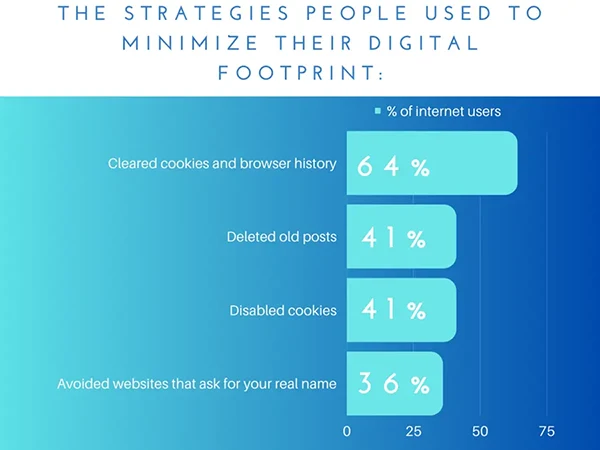
Digital footprints are like those cookie bits we drop behind in the kitchen. The only difference is these online bits are never going to be wiped away. Every picture we upload and every connection made will leave a trace even if we remove them from our side.
These footprints either help us in the future or could prove a perfect storm for us. With that being said, it is evident that teenagers are inclined and open to the virtual world which makes them more vulnerable to target.
In this article, we’ll shed some light on the relevance of raising awareness among teens and suggest some tips on exploring the web while protecting children’s privacy and saving personal information.
Digital Footprint is the collection of traceable data left behind by the user on the internet. It can be anything from a browser search to social media posts, comments, or even messages. These activities are recorded, usually for business purposes, and can be good or bad.
The info shared on the internet is never completely deleted and can significantly affect our lives. Here are four main types of digital footprints explained below:

There are various digital footprints on the web. Here, in this section, some examples of them are given to provide a clear image:
These were a handful of examples, while there are countless examples of it.
The input stored on the internet can be used by several entities including, individuals, companies, and governments. While there are various consequences of it, many reasons that make it worth considering.
Firstly, it forms your online reputation, which defines the way people, businesses, and government think about you. Having a good image online can have a significant impact on your social as well as personal life.
Suppose, you’re a content creator or a small business, know what you upload on the web, and how you react to other people’s posts, or feedback makes them decide your image or personality.
Secondly, digital footprints help commercial businesses and media platforms tailor our needs and preferences and then show you related content. It not only makes their work easier but also assists you in exploring your liking.
While leaving your information behind, it is vital to maintain privacy and safety. Even if you wish to remove your digital footprints, you can take aid from agencies specialized in providing such services. They will help guide you through the process and deal with data brokers to get your input removed from their database.
Though it will cut down the potential threats associated with cyberbullying, scamming, and other online hazards, having control and maintaining a good balance in your online activities is equally paramount.

(This graph shows the % of internet users who opt for strategies to minimize their digital footprints).
Now that we have discussed the basic points like what digital footprints are, the types, examples, and importance, it is time to take a look at some tips relevant to safely navigating the virtual realm.
It will cover everything from strengthening password security to raising awareness about online connections. So, let’s get into it!
Even the websites you are registering for, suggest creating a strong and unique password. Teach the teenagers how elemental it is to do that and even more to enable two-factor authentication or add an extra layer of guarding to their virtual presence.
Teenagers should learn to limit access to their confidential information. They need to learn about the settings that help maintain control over their social accounts such as who can see their profile or posts, or who can message them.
They should be careful while accepting requests from strangers. Guide them regarding the dangers of adding unknowns and connect with known people only. Teach them how to inactive and unfamiliar accounts.
Instruct them about avoiding sensitive information sharing. Make sure they don’t post anything like their home address, phone number, or school details. Explain to them the potential risks of exposing such data.
Kids should be cautious relating to the content they share on the internet. Enlighten them regarding the impact of their posts and make them think of their image, relationships, and future opportunities.
Do You Know?
Up to 79% of Americans are concerned about companies breaching their online privacy.
Digital footprints are a significant thing worth considering. While kids should be mindful of it, as their teachers or guardians, it is your duty as well to explain to them about their actions and their impacts. This will help them make better decisions and choices for the future.
